
Publisher:
Bonnie King
CONTACT:
Newsroom@Salem-news.com
Advertising:
Adsales@Salem-news.com

~Truth~
~Justice~
~Peace~
TJP
Jan-18-2009 14:17

 TweetFollow @OregonNews
TweetFollow @OregonNews
Toxic Hangars: Veterans Told to 'Take a Hike'
Robert J. O'Dowd for Salem-News.comThe Marine Corps takes great pride in taking care of its own. Marines are known to greet each other with “Semper Fi.” Semper Fi is a truncated form of “Semper Fidelis,” Latin for “Always Faithful.”
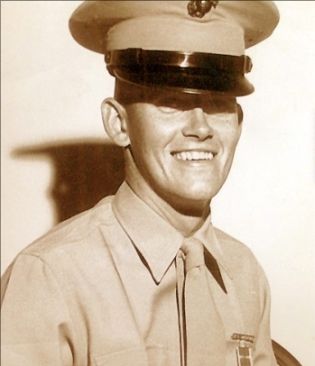 Robert O'Dowd served at MCAS El Toro in the 1960's. |
(SOMERDALE, N.J.) - This is the second report in the continuing investigation of the contamination at former MCAS El Toro. A prior report addressed issues related to the possible contamination of El Toro’s base wells (see: salem-news.com/tgsearch.php?tag=marine_corps).
The focus of this report is the government’s response of January 2, 2009, to requests from Marines to evaluate the risk of their possible exposure to trichlorothylene (TCE) and tetrachloroethylene (PCE) vapors in the hangars and buildings of the Marine Wing Support Group 37, the most industrialized portion of the base.
A number of El Toro veterans reported cancer and other serious illnesses to my blog and Salem-News.com possibly linked to TCE and PCE exposure. (see: mwsg37.com/ and salem-news.com/articles/august082008/tce_interview_7-8-08.php)
As a former El Toro Marine and bladder cancer survivor, I asked Dr. Howard Frumkin, Director, the Agency for Toxic Substances Abuse Registry (ATSDR), for a health consultation in May 2008 and recommended that other veterans and dependents do likewise. Based on their website an ATSDR Health Consultation “provides advice on a specific public health issue related to real or possible human exposure to toxic material. Anyone can request a Health Consultation. At the time, this seemed like a perfectly logical choice. Boy was I wrong! (see: atsdr.cdc.gov/HAC/consult.html)
ATSDR is responsible for public health assessments of EPA Superfund sites. Former MCAS El Toro is an EPA Superfund site and the ATSDR public health assessment of El Toro in 1993 was indeterminate because of a lack of on-station data. In short, ATSDR made no call on the public health from the contaminants on the base in 1993 and, in fact, over the intervening 15 years. Marines in MWSG-37 transferred operations to Miramar in October 1998.
ATSDR reported this month they worked with the Environmental Protection Agency (EPA) and the Navy to “identify and gather relevant environmental data.” The results of ATSDR efforts were reported to all “petitioners” by letter on January 2, 2009 (see: atsdr.blogspot.com for a copy of ATSDR’s letter)
TCE Source
In 1985, the Orange County Water District found trichloroethylene (TCE) in shallow irrigation wells down gradient of the base. In 1990, MCAS El Toro was placed on EPA’s National Priorities List (NPL) primarily because of a plume of toxic waste (primarily TCE) spreading off base several miles threatening the local water supply.
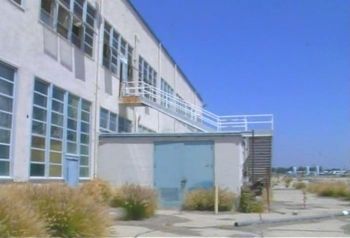
ATSDR, under the Department of Health and Human Resources, was created by the Comprehensive Environmental Response, Compensation and Liability Act of 1980 (CERCLA), more commonly known as Superfund. ATSDR is required by law to conduct a public health assessment at each site proposed or listed on EPA’s National Priorities List.
ATSDR’s public health assessment report in 1993 did not include MWSG-37, the source area for the TCE plume. Several more years would pass before the Navy identified MWSG-37 as the source of the TCE plume. El Toro’s MWSG-37 two huge maintenance hangars (each over several hundred thousand sq. ft. in area) were not included in the public health assessment even though those hangars were located in a highly industrialized area where TCE was used as a degreasing agent for decades. In 1993, the Navy had not traced the source of the TCE plume to a particular site on the base.
In 1997 (12 years after TCE was discovered off the base), EPA reported that the MWSG-37 hangars were the source of the toxic plume spreading miles off the base. EPA found that: “approximately 1,500 pounds of TCE are estimated to be present in soil gas…an additional 4,000 pounds of TCE would be present in the soil moisture…the mass of TCE in groundwater beneath Site 24 is estimated to be approximately 2,000 pounds.” The City of Irvine’s consultant estimated the volume at 700,000 pounds. The Navy disagrees with the higher estimate. No one disagrees that hundreds of 55 gallon drums were used at El Toro over many years.
EPA traced the “hot spot” to the MWSG-37 maintenance hangars: “…the primary VOC source is present beneath Buildings 296 and 297, extending to the south with decreasing concentrations to the southern Station boundary. Several smaller source areas exist in the soil beneath Site 24, including a PCE soil gas plume located west of Building 297. The VOC [Volatile Organic Compounds] concentrations in soil gas generally increase with depth, and the highest concentrations occur near the water table. VOCs in the area of Buildings 296 and 297 extend to groundwater directly beneath those buildings.” Anyone who was assigned to MWSG-37 would have some concerns over the health effects since exposure to this chemical can be deadly.
In January 2000, EPA reported that acute (short-term) and chronic (long-term) inhalation exposure to trichloroethylene (TCE) can affect the human central nervous system, with symptoms such as dizziness, headaches, confusion, euphoria, facial numbness, and weakness. Liver, kidney, immunological, endocrine, and developmental effects have also been reported in humans. A recent analysis of available epidemiological studies reports trichloroethylene exposure to be associated with several types of cancers in humans, especially kidney, liver, cervix, and lymphatic system. (see: epa.gov/ttn/atw/hlthef/tri-ethy.html)
The Marines and civilian workers in MWSG-37’s 200 acres worked in an extremely toxic environment. The fact that a number are seriously ill should not come as a surprise to toxicologists and knowledgeable medical experts. There are no procedures for the government to follow-up on veterans’ health issues unless, of course, something very serious is brought to their attention.
“Heads-up” Needed
The Marine Corps takes great pride in taking care of its own. Marines are known to greet each other with “Semper Fi.” Semper Fi is a truncated form of “Semper Fidelis,” Latin for “Always Faithful.” To some, it may sound strange, even weird when complete strangers, who just met for the first time and discovered they were in the Corps, would take the time to exchange this greeting. It’s not a secret password. The Marine Corps is not a secret society, but it is a brotherhood. If you’re not convinced, the next time you see someone who you know is a Marine, just say: “Semper Fi.”
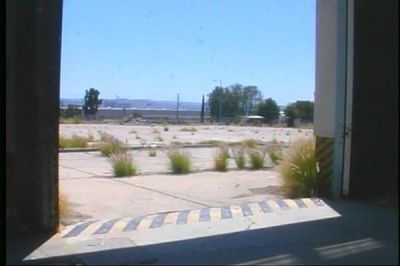
When I learned from my urologist that my stage 2/3 bladder cancer was possibly linked to TCE exposure at El Toro, the natural thing for me was to give a heads-up to other Marines. Knowing that we are geographically spread over the country, I started a blog site to spread the word to others in early 2007. (see: MCAS El Toro: EPA Superfund).
Except for Camp Lejeune, North Carolina, the Department of Defense has not notified any veteran of a military base on the EPA Superfund of their possible exposure to contaminants and the health effects. As a result of TCE contamination of base wells and a number of deaths, Senator Elizabeth Dole (D, NC) included an amendment to the 2008 Defense Authorization Bill to require the Navy to notify “to notify potential victims of past water contamination at Marine Corps Base Camp Lejeune.” (see: noolf.com/index.cfm/sid.356/nid.2034/do.s/p.25?action=&PageNum_get=25)
It’s not a money issue. Veterans by law cannot file a tort suit for injuries on active duty. Veterans can file a VA disability claim. But, for someone with cancer separated from the military for years, they can get better odds playing “Power Ball” (195,000,000 to 1). At last count, there were 133 military sites on the EPA Superfund list. It turns out, not surprisingly that Defense Department is the biggest polluter in the country.
El Toro veterans are collecting signatures for a petition to President Elect Obama and Congress to require the DOD to notify Marine and Navy veterans of El Toro and other military bases on the EPA Superfund list of the risks of exposure and health effects to contaminants. You can help the Marines by signing the Petition. (see: salem-news.com/articles/november232008/marine_pet_drive_11-23-08.php)
Vapor Intrusion Expert
In March 2008, Lenny Siegel, a nationally recognized expert on TCE vapor intrusion and the Executive Director of the Center for Public Environmental Oversight, provided, at my request, an analysis of the risk of exposure to vapor intrusion in the two MWSG-37 hangars:
“Marine veterans recently asked me to look into the possibility that workers/Marines at the former El Toro Marine Corps Air Station might have been exposed to unacceptable levels of trichloroethylene (TCE) in the indoor air at buildings (hangars) 296 and 297, part of Site 24 at that base," Siegel said.
“My knowledge of the situation is incomplete. I last reviewed El Toro data in late 2004, when I considered potential future vapor intrusion." (see: cpeo.org/lists/military/2004/msg01100.html)
He continued, "But I think I know enough to recommend further, detailed evaluation."
“From my earlier research, I have in my files a few pages from the June 2002 'Draft Final Site Closure Report for Vadose Zone Remediation, IRP Site 24, Volatile Organic Compounds Source Area.' Table 3-4 shows Closure Sampling Analytical Results. This table compares the post-closure (of the treatment system) TCE sampling results of soil gas from vapor extraction wells under and near the buildings with 'baseline TCE concentrations,' the sampling results before soil vapor extraction took place. If I recall correctly from my earlier tour of El Toro, the SVE system removed a large quantity of TCE from the vadose zone (soil above the groundwater table) at El Toro," Seigel said.
He explained a typical baseline result. "In well 24SVE49, screened at a depth of 83 to 103 feet, the TCE soil gas concentration was 120 micrograms/liter on August 12, 1999. In my limited experience, micrograms/liter is an unusual unit for measuring soil gas. My handy-dandy air-unit conversion calculator (found at airtoxics.com/cclasses/unitcalc.html) says that equals 120,000 micrograms/cubic meter. Assuming that is correct ..."
Siegel says that with a common but low-end attenuation factor of 1/1000, "That could cause indoor air contamination of 120 micrograms/cubic meter. In reality, attenuation depends upon the building. Sumps, drains, cracks in the floor, and other holes could increase indoor concentrations. Active ventilation, open hangar doors, and a high ceiling could reduce indoor contamination levels. Also, the depth to groundwater (and thus depth of the samples) might have also cause less concentrated TCE exposures."
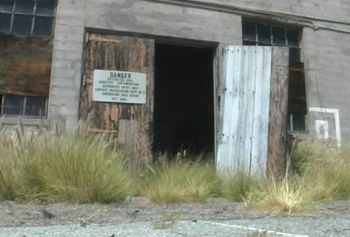
"Dividing by 12 to get from 25-year exposure to the 2 years a typical marine might have worked in the building, that's still the equivalent of 10 micrograms/cubic meter over 'lifetime' exposure, enough to correspond to a 1 in 400,000 excess lifetime cancer risk for an occupational exposure. If he was exposed to the same or similar chemicals before or after, that would have increased the risk. People who worked there longer would also have experienced a greater risk of cancer," Siegel said.
He added, "Of course, if workers were using TCE in the hangar, the air concentrations were likely much higher."
"In summary, I don't know enough to say how likely it was that someone working in these buildings would contract cancer as a result of workplace exposure. But if I read the numbers correctly, there is enough information to merit a full retrospective evaluation of the risks," Siegel concluded.
Based on Siegel’s analysis, a results was made to ATSDR for a health consultation.
Early Sampling Results
Early groundwater samples conducted by the Navy in the MWSG-37 area (Site 24) between July 1997 and July 1998 showed elevated TCE concentrations: TCE in 38 of 62 samples exceeded the MCL of 5 ug/L. Another 119 samples were collected during the Site 24 groundwater remediation pilot testing. Of these 101 exceeded the MCL. The maximum TCE concentration was 4,850 ug/L near Hangar 296. (see: envirostor.dtsc.ca.gov/public/profile_report.asp?global_id=30970003)
ATSDR Report
In their letter of January 2, 2009, ATSDR noted that their health evaluations are based “on the available environmental sampling data.”
ATSDR reported that they were unable to “identify any sampling data that described the concentrations of TCE in the indoor air of the hangars.” Without sampling data, the agency was unable to “conclusively determine whether the indoor air quality of the hangars was impacted by TCE present in the soil or groundwater beneath the buildings.” This sounded disappointing but not totally unreasonable since Marine veterans were not looking for answers in any magic ball. However, there was more to the story.
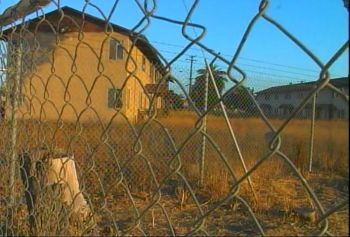
In fact, the Navy did provide ATSDR with samples from December 1998 and February 1999 for “approximately 25 different locations under and around the hangar and other neighboring buildings in this industrial area.” This was not good enough for ATSDR since “the sampling occurred about the time the base was closing; possibly 20 years or more after TCE use at the base was discontinued.” Using this data would not be appropriate since the samples “may not represent those that were present in the soil beneath the hangars while the base was an active facility.” Further, ATSDR noted that the gas samples “were obtained from a depth of approximately 50 feet below the soil surface. The actual concentrations beneath the foundations of the hangars could have been higher or lower than those measured at the 50 foot depth.”
According to Marines stationed at El Toro, TCE continued to be used on the base in the 1990s. The official EPA estimate was that TCE was discontinued in the mid-1970s. EPA obtained this date from interviews with current and past employees. There is no evidence that EPA confirmed shipments of TCE from the Defense Logistics Agency to El Toro or checked El Toro’s purchase requisitions to verify these verbal responses. If TCE was discontinued in the mid-1970s, then the obvious next question is what was the substitute chemical used to degrease aircraft? Again, this question was not apparently asked by EPA.
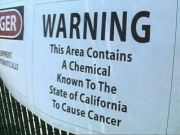
With regard to the actual concentrations of TCE beneath the foundations of the hangars, there’s no way to determine without sampling under the foundations. No question that even if done today, the results would be different than in the past. However, based on my reasoning that’s where the expertise and judgment of professionals can be used to make fair and reasonable determinations. None of us live in a perfect world.
Obviously, ATSDR was not interested in using the Navy’s samples under any circumstances. Even if the Navy could take samples under the foundations, there’s no way the Navy could replicate the activities in the hangars that took place over the decades.
Following the suggestion of Siegel, petitions asked ATSDR to use the Johnson-Ettinger model to estimate the indoor air concentrations of TCE. ATSDR agreed that this model “was developed by EPA to serve as a screening level model. It is frequently used to identify situations where the indoor air of a building could be impacted by the underlying contaminants due to soil vapor intrusion.”
You guessed it. ATSDR didn’t want to use the model. First, the accuracy of the model depended upon the “underlying geology and the contaminant concentrations.” Apparently, there are too many unknowns for ATSDR to even estimate these factors. Secondly, too little was known “about the activities that also have influenced the indoor air concentrations of TCE.” The activities in the hangars must be known to the Navy and the Marine Corps. If there gaps in the knowledge base, then former civilian employees and Marines could help to fill in gaps. If interviews of employees are a valid technique to establish a time line when TCE usage was discontinued on the base, then interviews and surveys can be used to fill in any Navy and Marine Corps knowledge gaps about activities in the hangars.
Just in case any Marines had thoughts on how to bridge the uncertainties expressed by ATSDR, the agency eliminated this possibility by concluding that its authority “does not include evaluation of the potential exposure workers may have experienced to the chemicals used in their occupational environment.” ATSDR could have saved a great deal of time and troubles by letting everyone know that back in May 2008. My conclusion is at best the ATSDR evaluation was nothing more than a farce.
ATSDR noted that the Navy Marine Corps Public Health Center, Occupational Health Department, “does have the authority and appropriate expertise to address occupational exposure issues.” ATSDR’s recommendation was that our concerns should be addressed to the Navy. Gee, what an original thought: Ask the agency responsible for the pollution to assist those impacted by it. The odds of anything positive coming from this probably exceed winning the Power Ball lottery on one draw.
This is my first experience in dealing with ATSDR. I’m sure I express the feelings of many Marine petitioners, “don’t ask ATSDR to do anything. It’s a waste of time. They have more excuses for not doing something than Carter has pills.”
Here is a complete list of the articles that have been generated on the contamination of the former Marine Base at El Toro and at Camp Lejeune, North Carolina:
- Government Findings on El Toro Wells Not Unexpected - Robert J. O'Dowd Salem-News.com
- Deadly Toxic Chemicals from El Toro Marine Base Affect Woodbridge in Irvine - Tim King Salem-News.com
- Veterans `Kept in the Dark - Robert J. O'Dowd for Salem-News.com
- Have Irvine and Lennar Ignored Hazardous Nuclear Waste at El Toro? - Tim King Salem-News.com
- Marine Veterans Lead Petition Drive - Robert J. O'Dowd for Salem-News.com
- 'A Few Good Men, Lots of Chemicals' - Robert J. O'Dowd for Salem-News.com
- Orange County Turns Blind Eye to Toxicity of Former Marine Base - Tim King Salem-News.com
- El Toro's Wells Still Suspect- Robert J. O'Dowd for Salem-News.com
- Marines Unaware of Risks- Robert J. O'Dowd for Salem-News.com
- TCE Expert Talks With Former El Toro Marine About Toxic Waste (VIDEO) - Tim King Salem-News.com
- Contaminated Marine Base in Irvine Slated for Public Park and Community Development (VIDEO REPORT) - Tim King Salem-News.com
- Memories of the El Toro Marine Air Base: a Modern Day Ghost Town - Tim King Salem-News.com
- Deadly Toxic Chemicals From Marine Base Threaten Irvine Neighborhoods (VIDEO REPORT) - Tim King Salem-News.com
- Irvine, California Threatened by Contaminated Water From El Toro Marine Base (VIDEO REPORT)- Tim King Salem-News.com
- El Toro Contamination Reports will Continue - Tim King Salem-News.com
- Sick Marines and Contaminated Water: Questions Surround El Toro Marine Air Base (VIDEO REPORT)- Tim King Salem-News.com
- Watch for our Series on El Toro Marine Base Contamination - Tim King Salem-News.com
- In-Depth Look at El Toro Marine Base TCE Contamination Begins Next Week - Tim King Salem-News.com
- Former Marine Testifies Over Deadly Contaminated Water at Camp Lejeune - Tim King Salem-News.com
- Marine Who Lost Child From Contamination at Camp Lejeune will Appear in Washington - Tim King Salem-News.com
- Federal Agency Money Bickering Could Spell Doom for Sick Marines - Tim King Salem-News.com
- Marine Death Camp: Camp Lejeune Trichlorethylene - the Culprit - Dr. Phil Leveque Salem-News.com
- El Toro Marines Should be Aware of Possible Contaminant Based Health Hazards - Tim King Salem-News.com
Follow this link to all of our stories about the Marine Corps and TCE
 Bob O’Dowd is a former U.S. Marine with thirty years of experience on the east coast as an auditor, accountant, and financial manager with the Federal government. Half of that time was spent with the Defense Logistics Agency in Philadelphia. Originally from Pennsylvania, he enlisted in the Marine Corps at age 19, served in the 1st, 3rd, and 4th Marine Aircraft Wings in 52 months of active duty in the 1960s. A graduate of Temple University, Bob has been married to Grace for 31 years. He is the father of two adult children and the grandfather of two boys. Bob has a blog site on former MCAS El Toro at mwsg37.com. This subject is where Bob intersected with Salem-News.com. Bob served in the exact same Marine Aviation Squadron that Salem-News founder Tim King served in, twenty years earlier. With their combined on-site knowledge and research ability, Bob and Tim and a handful of other ex-Marines, have put the contamination of MCAS El Toro on the map. The base is highly contaminated with TCE, trichloroethelyne. You can email Bob O’Dowd, Salem-News.com Environmental and Military Reporter, at this address: consults03@comcast.net
Bob O’Dowd is a former U.S. Marine with thirty years of experience on the east coast as an auditor, accountant, and financial manager with the Federal government. Half of that time was spent with the Defense Logistics Agency in Philadelphia. Originally from Pennsylvania, he enlisted in the Marine Corps at age 19, served in the 1st, 3rd, and 4th Marine Aircraft Wings in 52 months of active duty in the 1960s. A graduate of Temple University, Bob has been married to Grace for 31 years. He is the father of two adult children and the grandfather of two boys. Bob has a blog site on former MCAS El Toro at mwsg37.com. This subject is where Bob intersected with Salem-News.com. Bob served in the exact same Marine Aviation Squadron that Salem-News founder Tim King served in, twenty years earlier. With their combined on-site knowledge and research ability, Bob and Tim and a handful of other ex-Marines, have put the contamination of MCAS El Toro on the map. The base is highly contaminated with TCE, trichloroethelyne. You can email Bob O’Dowd, Salem-News.com Environmental and Military Reporter, at this address: consults03@comcast.net
Articles for January 17, 2009 | Articles for January 18, 2009 | Articles for January 19, 2009

Quick Links
DINING
Willamette UniversityGoudy Commons Cafe
Dine on the Queen
Willamette Queen Sternwheeler
MUST SEE SALEM
Oregon Capitol ToursCapitol History Gateway
Willamette River Ride
Willamette Queen Sternwheeler
Historic Home Tours:
Deepwood Museum
The Bush House
Gaiety Hollow Garden
AUCTIONS - APPRAISALS
Auction Masters & AppraisalsCONSTRUCTION SERVICES
Roofing and ContractingSheridan, Ore.
ONLINE SHOPPING
Special Occasion DressesAdvertise with Salem-News
Contact:AdSales@Salem-News.com

Salem-News.com:
googlec507860f6901db00.html

Terms of Service | Privacy Policy
All comments and messages are approved by people and self promotional links or unacceptable comments are denied.
Ed Fremer February 2, 2009 8:01 am (Pacific time)
My son Michael Fremer was killed at Fort Polk, La on 2/13/08 because of Army Negligence during a training exercise. The Army can not be held accountable because of the Feres Doctrine. This law needs to be changed. Why is the Army exempt from being held accountable for Negligence? Our young men and woman are risking their lives. This is how our country treats the soldiers and the families? The Feres Doctrine needs to be overturned!
stephen January 18, 2009 6:29 pm (Pacific time)
its hitting the mainstream.. http://www.youtube.com/watch?v=zu551QLGJog
Bob O'Dowd January 18, 2009 6:15 pm (Pacific time)
Semper Fi, Danny. The VA has a terrible reputation for processing disability claims. It sounds to me like you have enough physical issues without getting involved in a paperwork drill. You probably know this but there are few experienced attorneys to represent you in a VA claims process. When you’re ready to get back into the fight, call Mr. Craig Kabatchnick, a law professor at North Carolina Central University, manages a pro bono Veterans Assistance Center. You can reach him at one of the following numbers: 336-456-3751 (cell), 919-530-6605 (Law School), 336-545-8839 Greensboro, NC home office (before 9:00 EST) or on email at cmkabatchnick@triad.rr.com. Take care, brother.
Danny Bogard January 18, 2009 3:42 pm (Pacific time)
Semper Fi Bob - - Please keep up the great work of trying to keep other Marines informed on the El Toro and Camp Lejeune issues. I have been battling the VA for years, trying to get disability for losing a liver to Agent Orange. I have diabetes, am a prostate cancer survivor. Also chronic kidney disease, nueropathy and six stents in my heart...all as an accepted [by VA] result to exposure to Agent Orange. They have finally worn me down with superflous requests for various records, paperwork, etc. I am giving up fighting, at least their are guys like you continuing to fight, again...semper fi brother...go get 'em.
[Return to Top]©2025 Salem-News.com. All opinions expressed in this article are those of the author and do not necessarily reflect those of Salem-News.com.